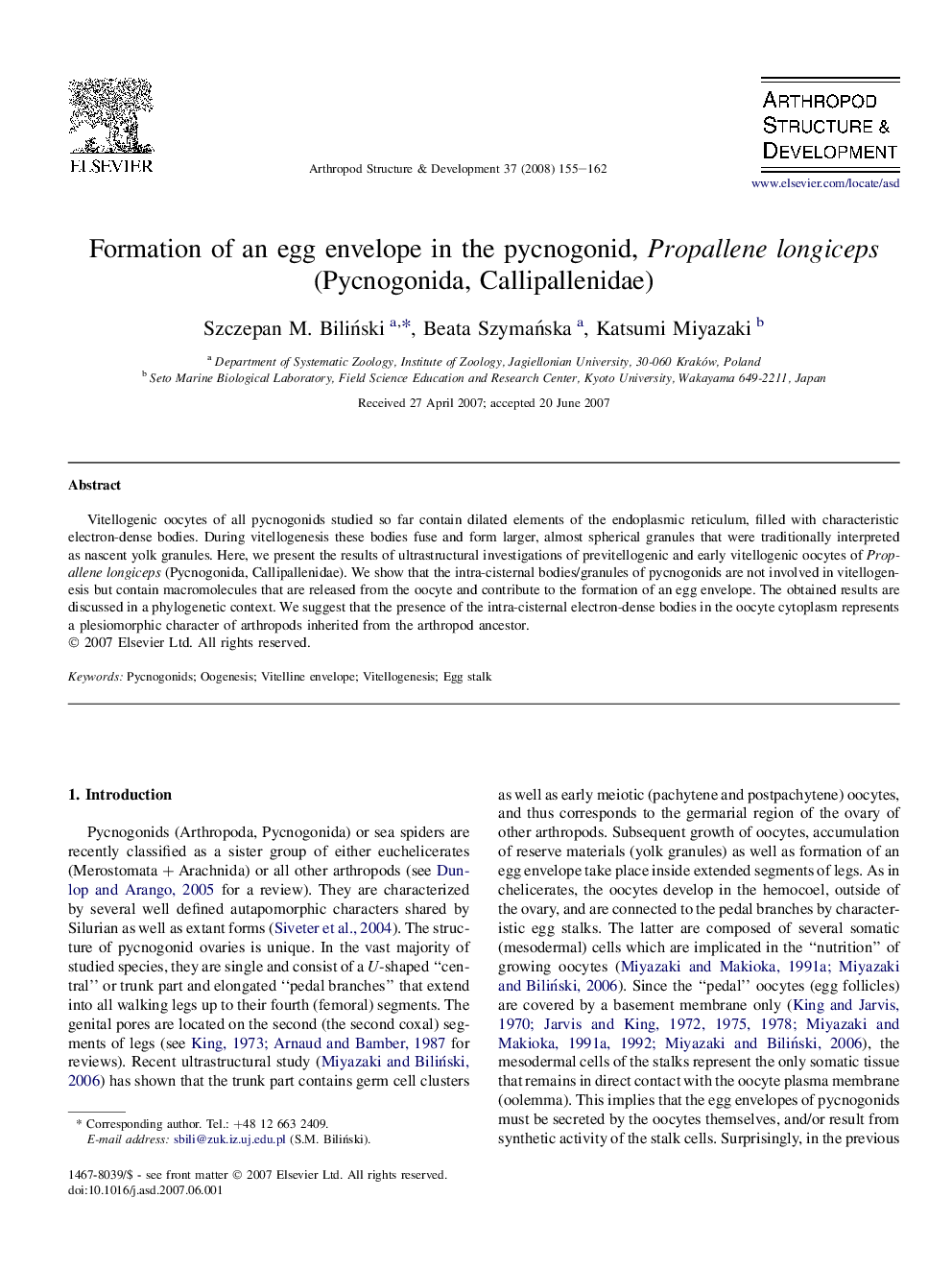| Article ID | Journal | Published Year | Pages | File Type |
|---|---|---|---|---|
| 2779063 | Arthropod Structure & Development | 2008 | 8 Pages |
Vitellogenic oocytes of all pycnogonids studied so far contain dilated elements of the endoplasmic reticulum, filled with characteristic electron-dense bodies. During vitellogenesis these bodies fuse and form larger, almost spherical granules that were traditionally interpreted as nascent yolk granules. Here, we present the results of ultrastructural investigations of previtellogenic and early vitellogenic oocytes of Propallene longiceps (Pycnogonida, Callipallenidae). We show that the intra-cisternal bodies/granules of pycnogonids are not involved in vitellogenesis but contain macromolecules that are released from the oocyte and contribute to the formation of an egg envelope. The obtained results are discussed in a phylogenetic context. We suggest that the presence of the intra-cisternal electron-dense bodies in the oocyte cytoplasm represents a plesiomorphic character of arthropods inherited from the arthropod ancestor.
